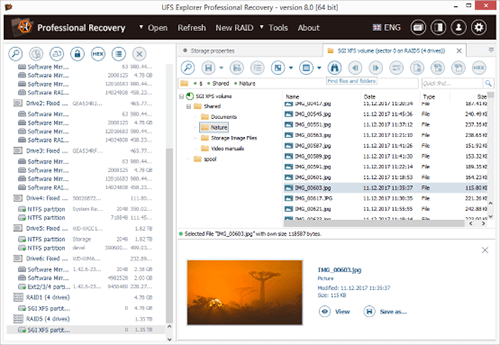

- Ufs explorer professional recovery manual how to#
- Ufs explorer professional recovery manual software#
The process of data recovery on QNAP NAS.
Ufs explorer professional recovery manual how to#
Ufs explorer professional recovery manual software#
Creating a bootable (live) USB drive using third-party software.Use of a network storage to save the recovered data.Opening a virtual disk in UFS Explorer for further processing.

Scanning a drive with UFS Explorer to recover deleted or lost files.The articles in this section provide the basic information that may be required during work with UFS Explorer and demonstrate how you can perform the principal procedures implemented in the software, from scanning the storage device with the goal of recovering deleted files to evaluation and saving the obtained scan results. With such a background, it will be much easier for you to approach a data recovery procedure and handle any possible complications. Using this information, you can familiarize yourself with their technological peculiarities and typical problems that may arise in the course of their operation. The section is devoted to the features that are characteristic for devices of a certain model or manufacturer. Synology NAS: The peculiarities of data organization and recovery.NAS: The principles of data organization and recovery of lost files.The basic architecture of Linux LVM and prospects for data recovery.The basics of virtual machines and their potential data loss issues.Data organization and recovery principles of Apple’s Fusion Drive.Apple Core Storage: Composition and possible data recovery challenges.Synology Hybrid RAID: Storage layout and specifics of data recovery.Drobo's BeyondRAID overview: What does it offer against data loss?.Data distribution and recovery peculiarities on different RAID levels.as well as their benefits and most common data loss issues. The articles will give you an idea on how data is organized by technologies like NAS, RAID, BeyondRAID, Synology Hybrid RAID, LVM, Apple Core Storage and Fusion Drive, etc. This section is focused on a variety of ways and methods used to store and manage information in modern computer systems.



 0 kommentar(er)
0 kommentar(er)
